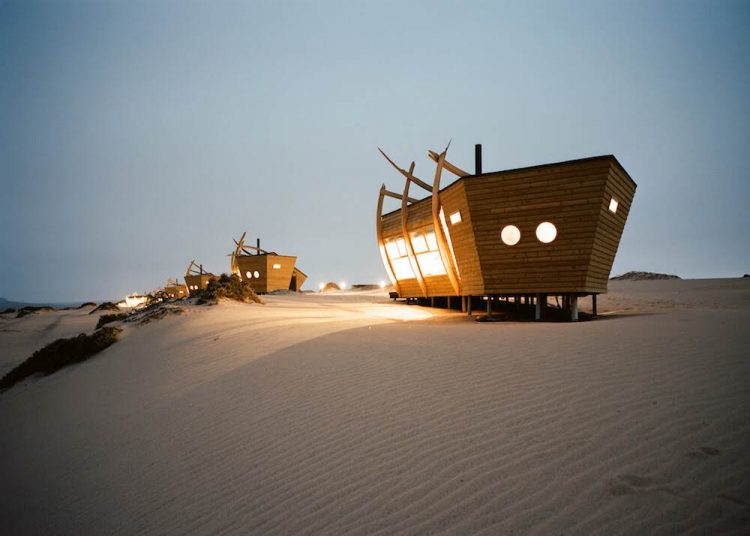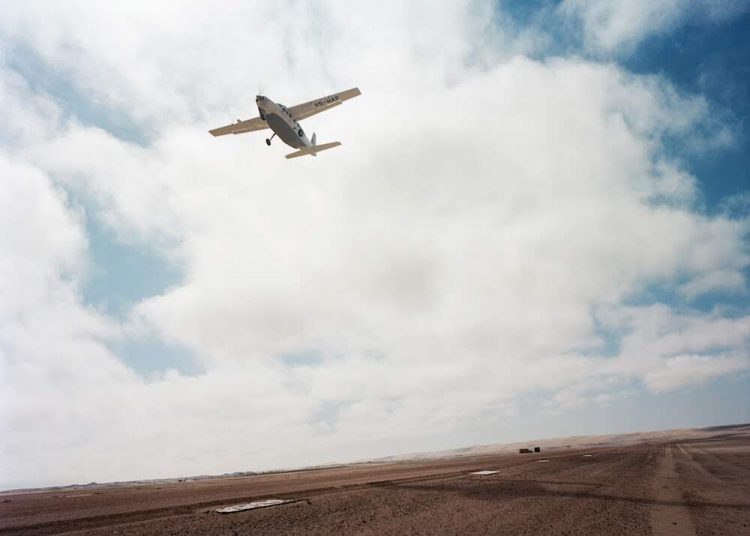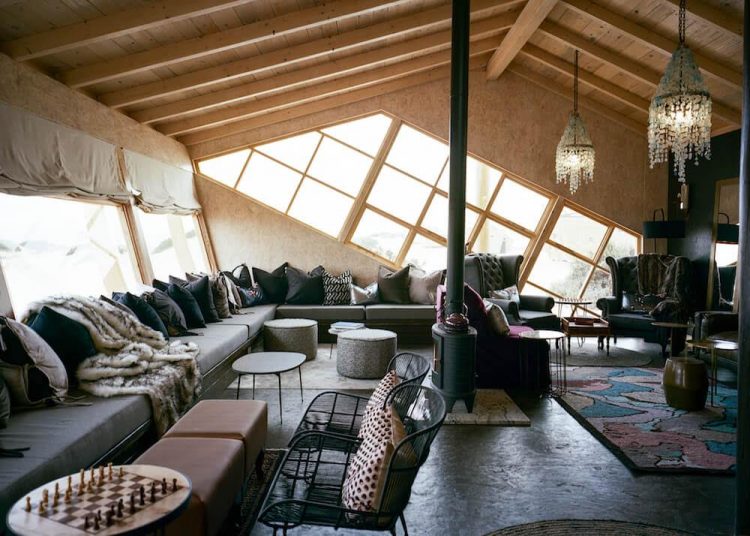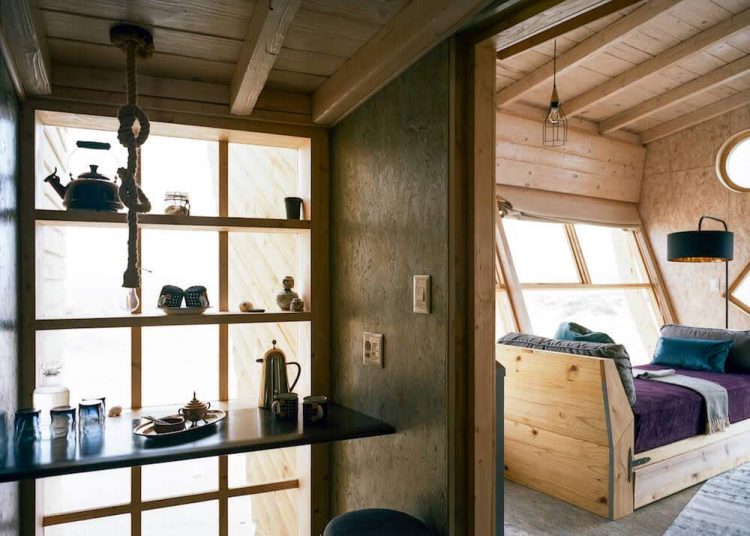
The desert is far from empty, but as you soar in a light aircraft above the sands of Namibia’s Skeleton Coast National Park, you do feel very alone. The vast, undulating wilderness stretches as far as the eye can see in every direction, the dunes ultimately giving way to the rocky shore of the Atlantic. Coming into land on a remote airstrip, the feeling is as close as most of us will ever get to landing on the surface of the moon. Shipwreck Lodge — hidden in this otherworldly land — is a retreat quite unlike any other.
Opened in 2018, Shipwreck Lodge takes its name and its architectural inspiration from the skeleton-like forms of the shipwrecks dashed on the beaches, and the sun and salt bleached whale bones besides them. There are just 10 wooden cabin, each one looking like the upturned hull of a wreck and supported by gently curved, rib like timbers. The innovative design is the work of Namibian architect Nina Maritz — who focuses on sustainability — and it’s already caught the eye of TIME magazine: they included it in The World’s Greatest Places 2018.

My pale wood cabin faintly reminds me of an Alpine ski chalet, but the brightness through the windows is the African sun reflecting off the sand, not snow. There’s a thick faux fur throw spread across the bed, and a wood burning stove to take the chill off the air. The Namib Desert has scant rain — in fact it’s the only true desert in Southern Africa — but temperatures can fall below freezing in winter, especially when the fog rolls in.
The cabins are spread out along the top of a sandy ridge, and the large windows and wrap around deck are oriented so that you’re largely unaware that there’s anyone else here at all. Unless you want to be sociable, the only time you have to come together with other guests is at mealtimes; the restaurant and swimming pool are, understandably, shared areas.
It can be hard to drag yourself away from the cosiness of Shipwreck Lodge’s interiors, but if you fail to do so, you’ll be missing out on exploring the extraordinary ecosystem which surrounds it. The landscape is rugged, wild, and I’d even go as far to say it’s eerie, especially in the half light. It came as no surprise when I was told that the local San Bushmen call this place “the land God made in anger.” But the brutality of the terrain is key to its beauty. It also forces you to be humble, in awe at the majesty of nature.

Few people live in this part of Namibia; that’s one of the reasons that the wildlife populations have been able to endure. There’s no one encroaching on their territory, and poaching is relatively rare.
Over countless millennia, the species have evolved to survive in this arid environment. The desert adapted elephants are known to dig through the sand to find the last vestiges of water. Other species — lions, baboons, brown hyena, kudu, and giraffes amongst them — follow along behind the herds and make use of the elephant-dug wells once the elephants have finished drinking. Tractrac chats and Benguela long billed larks flutter and swoop overhead, calling to one another. They, too, know that where the mammals go there is bound to be water and food.
Game drives here feel like expeditions; this is no sedate safari, but rather a real adventure. You don’t know what you will see, and there’s a near infinite combination of routes you could follow. I loved the excitement that came with jumping into a 4×4 in the morning, setting out to goodness knows where. One day we might steadily climb a dune, surveying the landscape from the top for signs of life, then careening down the other side at quite some speed, slipping and sliding on the sand. The sighting which was our reward could be a black rhino, a herd of mountain zebra, or the kind of all consuming sunset that will remain forever etched on your memory.

I drove out to Mowe Bay, famed for its huge seal colony. The beach here gleams, not only with the tide-polished grains of sand, but also with fragments of semi precious stones. The Cape fur seals carpet great swathes of the rookeries, lounging, barking at one another, and occasionally waddling in an ungainly fashion down to the water’s edge. They’ve grown fat on the fish and crustaceans; the marine life here is incredibly rich. It’s not uncommon to spot dusky and bottle nosed dolphins, plus killer, sperm, and humpback whales, even while you are stood on the shore.
If you are in search of solitude, come to Shipwreck Lodge. Far from the city lights and the 24/7 demands of the modern world, life seems simpler. At the lodge, you have the chance to reconnect with the natural world, and to be reminded of your place within it. Come to think, to write, to read, and to find your inner peace.

@africaexclusive
Skeleton Coast National Park, Namibia







